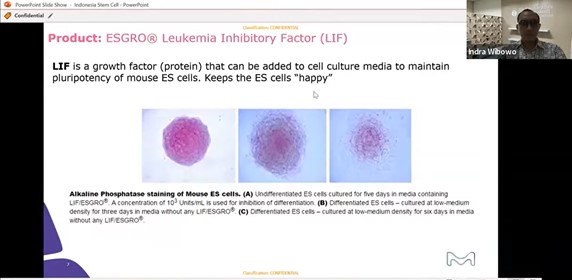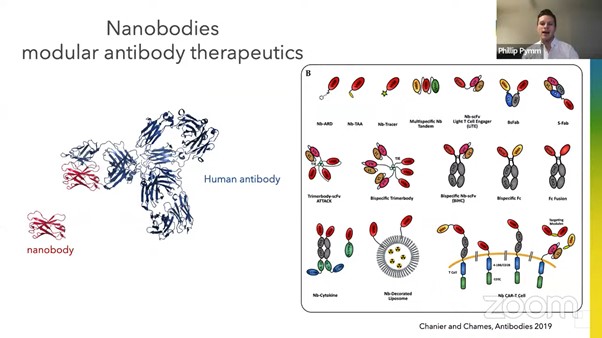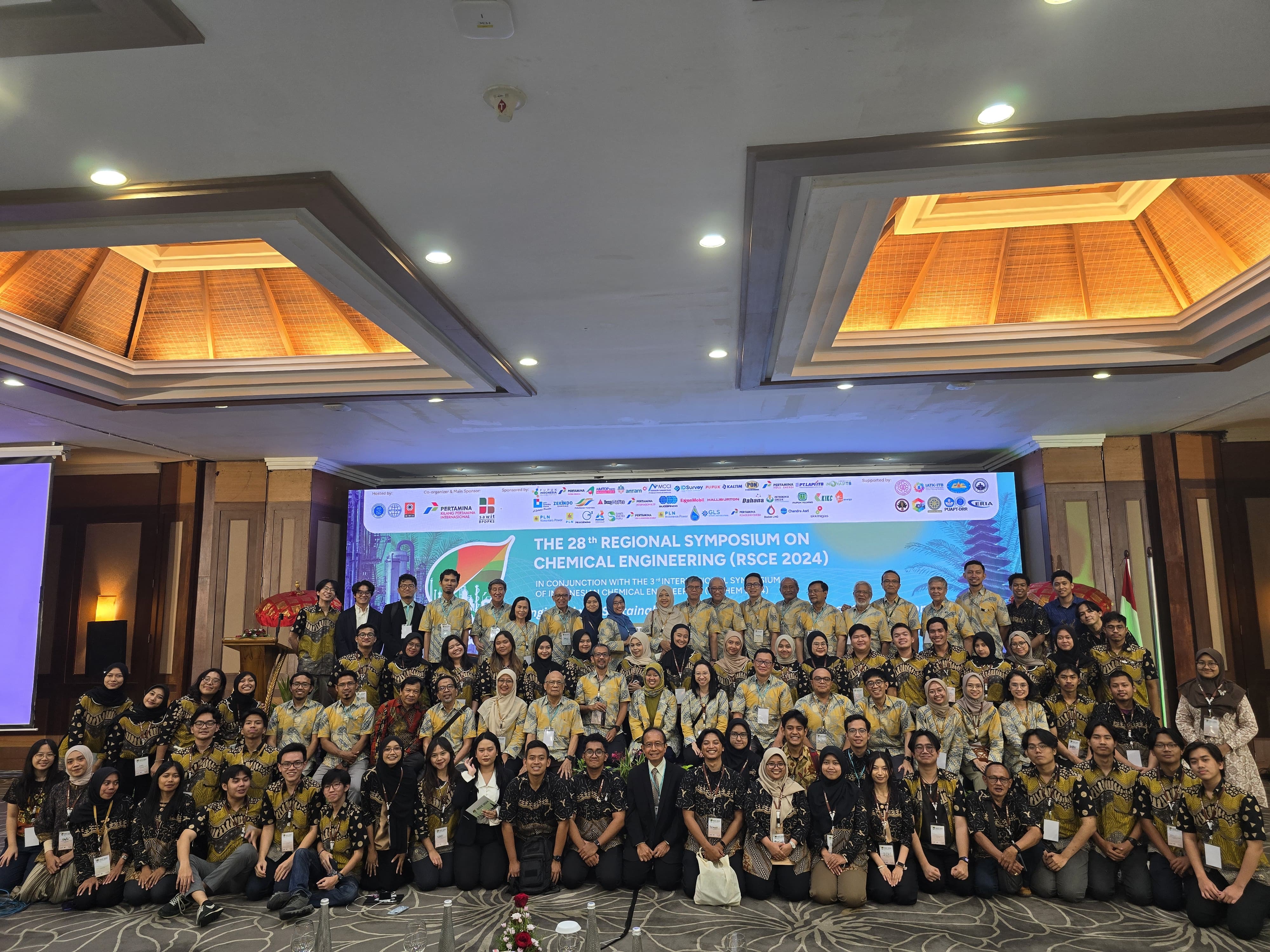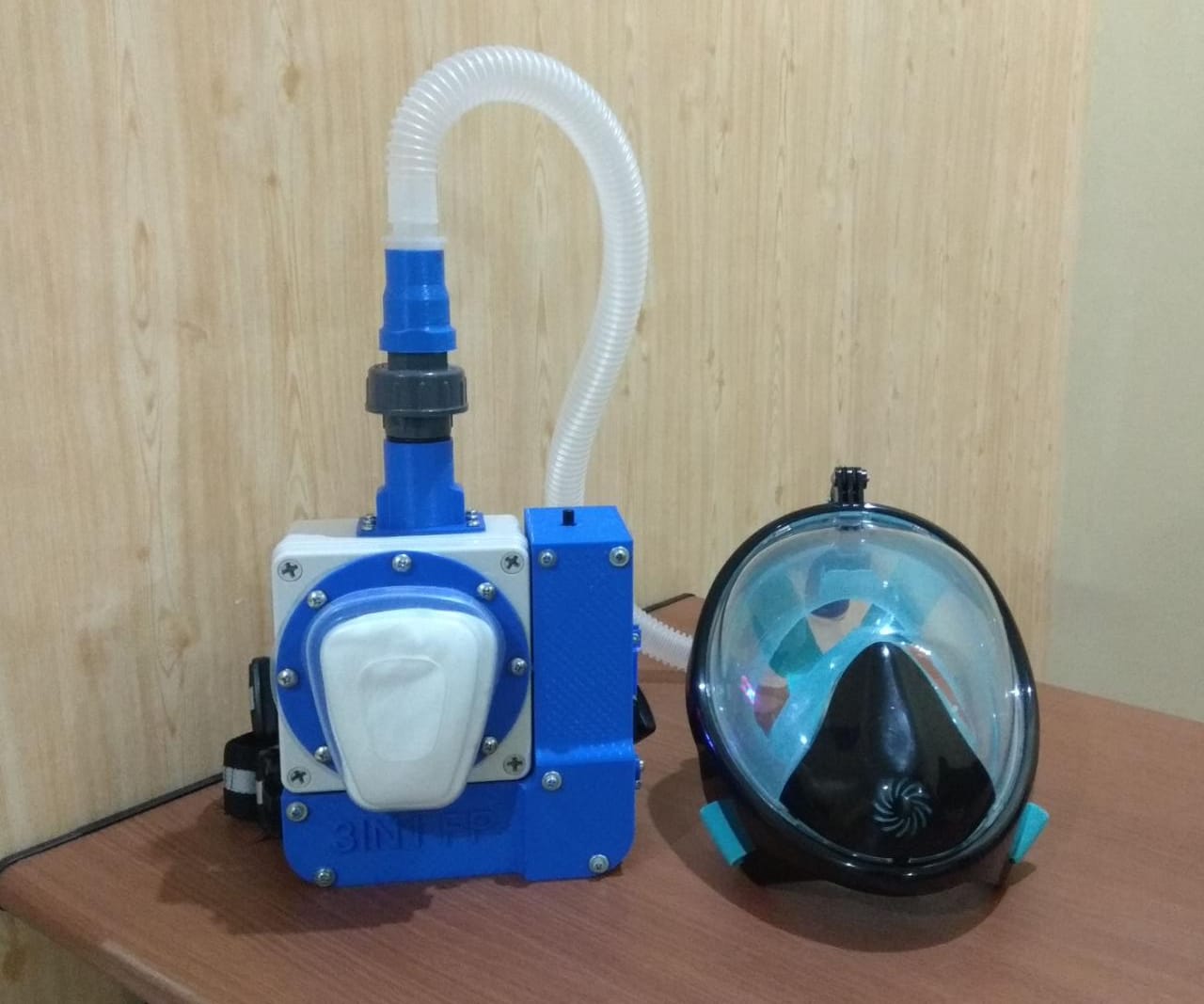Biotechnology in Health: From Mice to Alpacas for Humans.
By Adi Permana
Editor Adi Permana

BANDUNG, itb.ac.id–Global Product Manager for Stem Cells in Millipore Sigma, USA, Nick Asbrock explained that one method to study diseases on humans is by strengthening human body cells.
“So what scientists do in the laboratory is studying various aspects of each disease through cells,” he stated at the Biotechnology Fair event by ITB’s Master’s Program in Biotechnology, Monday (23/2/2022). His explanation relates to stem cells in the health sector.
What are stem cells? Stem cells are classified into two main groups: embryonic pluripotent stem cells and multipotent stem cells or mature stem cells. “The fundamental difference is that pluripotent stem cells can be differentiated to different types of body cells, whereas multipotent stem cells cannot,” he said.
One of the more common methods used for stem cells is by using mice. In stem cells, one crucial product is the ESGRO-LIF or ESGRO Leukemia Inhibitory Factor. LIF is a protein that may be added to media culture in order to maintain the pluripotent nature of the mice’s stem cells.

How are stem cells inducted in humans? Nick explained that the first step is to take a biopsy from the patient, then turn it to iPS cells (induced pluripotent cells). iPS cells have all the embryonic stem cells, so they can be used for regenerative treatment or in vivo usage and for toxicological disease modeling and drug screening or use in vitro.
Nick added that a new breakthrough in stem cell usage in the health sector are organoids; aggregates cells derived in vitro through primary tissue. Organoids have the ability to regenerate themselves, organize those cells themselves, as well as present certain functions of organs. “In the future, organoids can hopefully be utilized as a form of drug screening platform to predict a patient's specific response to the therapy they receive," he said.
Nanobodies and SARS-CoV 2
The following session is carried by Phillip Pym, Senior Research Officer at Walter & Eliza Hall Institute of Medical Research about nanobodies. “Nanobodies are the smallest naturally occurring antigen binding domains,” He explains further that nanobodies can be found in llamas, alpacas, and fishes with cartilages. Nanobodies are known to be more efficient at binding molecules to pathogens compared to conventional antibodies.
One of the biggest advantages of using nanobodies is that it is easily modified. This is due to the nanobodies’ size being smaller than the conventional antibodies’. Moreover, nanobodies may also give function in identifying protein structures with an additional function of stabilizing big and complex protein structures.

Relating to COVID-19, several therapeutic antibodies have already been greenlighted. These include Etesevimab which reduces up to more than 70% hospitalizations, Regn CoV2 which reduces 59% of the number of emergency patients, and GSK Sotrovimab which reduces 85% of hospitalizations.
Phillip states that being in the middle of the development phase is nanobody therapy with an inhalation method. Phillip also mentioned nanobodies specifically work for SARS-CoV-2 RBD. Furthermore, the way these nanobodies work is by blocking the relationship between RBD and ACE2, which prevents the virus from entering the body's cells.
Reporter: Athira Syifa P. S. (Postharvest Technology, 2019)
Translator: Hanna Daniela Ayu (Faculty of Mechanical and Aerospace Engineering, 2021)

.jpg)

.jpg)
.jpg)
.jpg)
.jpg)


